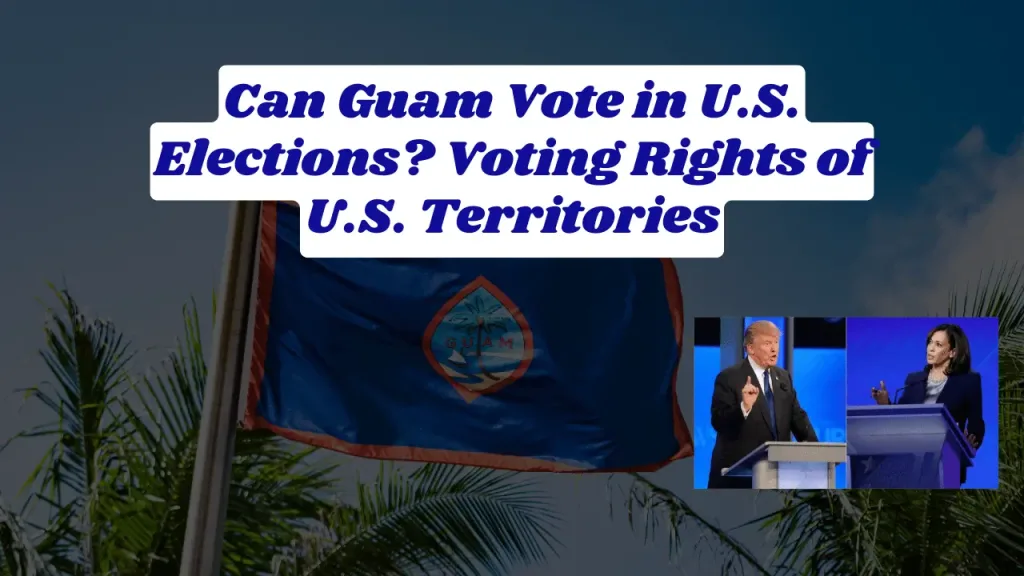Can Guam Vote in U.S. Elections? Voting Rights of U.S. Territories
While Guam is a U.S. territory and its residents are U.S. citizens, they cannot vote in U.S. presidential elections. However, Guam can participate in presidential primary elections and sends a non-voting delegate to the U.S. House of Representatives. Approximately 159,000 U.S. citizens in Guam face this unique voting situation.
Core Statistics
- Population: 159,000+ U.S. citizens
- Voter turnout in local elections: ~70%
- Presidential primary participation: 32% (2020)
- Military personnel stationed in Guam: ~12,000
Table of Contents
Guam, a U.S. territory in the Pacific, has a population of about 170,000 U.S. citizens, yet its residents do not enjoy the full spectrum of voting rights available to U.S. citizens living in the 50 states. The inability of Guam residents to vote in U.S. presidential elections or elect a voting representative in Congress is a point of ongoing contention. This issue highlights the unique legal and political status of U.S. territories, sparking debates on representation, equality, and Guam’s future relationship with the United States.

Guam’s Voting Rights in Federal Elections
- Presidential Elections: Guam residents cannot vote for the President of the United States in the general election. However, Guam holds a symbolic presidential straw poll during the election, giving residents a chance to express their preferences, although it does not impact the electoral outcome.
- Congressional Representation: Guam elects a non-voting delegate to the U.S. House of Representatives. This delegate can participate in committees and introduce legislation but cannot vote on final bills on the House floor.
- Local Elections: Guam residents have full voting rights in local elections, allowing them to choose their governor, legislature, and municipal representatives.
Expert Insight: According to Dr. Robert Underwood, a former U.S. House delegate from Guam, “Guam’s limited representation highlights a democratic gap, where U.S. citizens in the territories contribute to national policy yet lack a voice in decisions impacting them.”
Read also: Do Puerto Ricans Vote in US Elections? Puerto Ricans Voting Rights
Historical Context of Guam’s Political Status and Voting Rights
- Organic Act of Guam (1950): This act established Guam as an unincorporated U.S. territory and granted U.S. citizenship to its residents. However, it did not extend full voting rights, including the right to vote in presidential elections.
- Territorial Status: As an unincorporated territory, Guam does not have the same rights as U.S. states. The U.S. Constitution only guarantees certain rights to residents of unincorporated territories, which the Supreme Court has upheld in various cases.
- Push for Representation: Over the years, Guam has periodically raised the issue of statehood or increased autonomy, though without significant changes. Non-binding referenda show that Guam’s residents largely favor enhanced representation or political status adjustments.
Case Example: In 2008, Guam’s presidential straw poll showed strong support for the eventual winner, Barack Obama, even though Guam’s votes did not count toward the national total. This symbolic vote underscored the island’s desire for a voice in presidential elections.
Comparative Analysis: Guam and Other U.S. Territories
- Similarities with Other Territories: Guam’s voting rights are similar to those of Puerto Rico, the U.S. Virgin Islands, and American Samoa. All are U.S. territories with non-voting delegates in Congress and no voting rights in presidential elections.
- Washington, D.C. Exception: Washington, D.C., has unique status, with residents voting in presidential elections and having a non-voting delegate in Congress. This difference underscores the varying treatment of U.S. territories.
Data Point: A Pew Research Center survey revealed that a majority of Americans support increased representation for territories, with nearly 55% in favor of giving full voting rights to U.S. territories.
Practical Applications
Example Case 1: Advocacy for Guam’s Voting Rights
- Context: Guam has long advocated for full representation, raising the issue in Congress and through various local movements.
- Obstacles: Efforts for representation face legal and political hurdles, as constitutional amendments or new legislation would be required to grant full voting rights.
- Outcomes: Advocacy continues, with Guam’s leaders pushing for greater awareness of the need for equitable representation for U.S. territories.
Example Case 2: Guam’s Symbolic Presidential Straw Poll
- Scenario: Every four years, Guam holds a presidential straw poll, a unique event allowing residents to express their choice for president, even though their votes do not count in the Electoral College.
- Approach: This poll acts as a form of civic expression, engaging residents in the presidential election process.
- Results: The straw poll garners attention from U.S. media and highlights Guam’s desire for voting equality, although it remains largely symbolic.
Strategic Planning for Guam’s Political Future
- Long-Term Goals: Guam’s leaders and residents largely seek expanded rights or a change in political status, whether through statehood, greater autonomy, or other means.
- Progress Markers: Increased awareness and advocacy on the mainland may lead to gradual policy changes or further discussions in Congress.
- Action Planning: Organizations like the Guam Legislature and local advocacy groups are essential in pushing for a resolution to Guam’s limited federal voting rights.
Expert Section
- Professional Insight: Political scientist Dr. Michael Perez explains, “The unique status of Guam and other territories highlights a democratic imbalance that is increasingly difficult to ignore as U.S. territories play important roles in national security and policy.”
- Specialist Perspective: Advocacy groups encourage mainland U.S. citizens to support territory voting rights as a step toward more inclusive representation.
Key Takeaways
- Limited Federal Voting Rights: Residents of Guam cannot vote in U.S. presidential elections and have only a non-voting delegate in Congress.
- Local Representation: Guam residents fully participate in local elections, electing their governor and legislature.
- Ongoing Advocacy: Advocacy for increased representation and voting rights continues, reflecting Guam’s desire for greater political inclusion.
Conclusion
The question of Guam’s voting rights is part of a larger conversation on democracy, representation, and equality within the U.S. The unique status of Guam as an unincorporated territory restricts its residents’ voting rights at the federal level, a situation that remains a point of contention for both Guam residents and advocates for democratic representation. As advocacy grows, the future may bring changes that address this long-standing issue, moving toward greater representation for U.S. territories.
About the Author

Sarah Klein, JD, is a licensed attorney and legal content strategist with over 12 years of experience across civil, criminal, family, and regulatory law. At All About Lawyer, she covers a wide range of legal topics — from high-profile lawsuits and courtroom stories to state traffic laws and everyday legal questions — all with a focus on accuracy, clarity, and public understanding.
Her writing blends real legal insight with plain-English explanations, helping readers stay informed and legally aware.
Read more about Sarah
